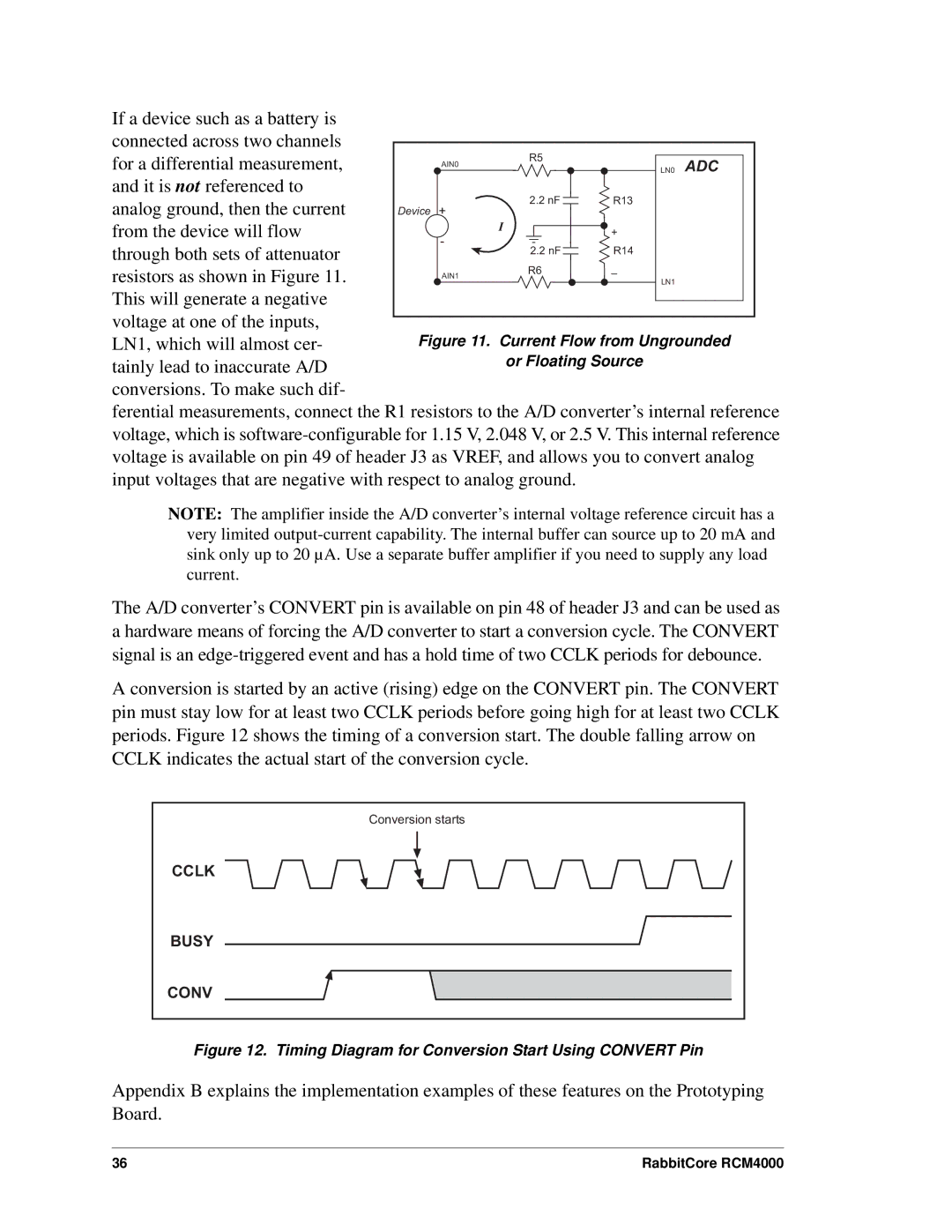
If a device such as a battery is |
|
|
|
|
|
|
|
|
|
|
|
|
|
|
|
|
|
connected across two channels |
|
|
|
|
|
|
|
|
|
|
|
|
|
|
|
|
|
|
|
|
| R5 |
|
|
|
|
| ||||||||
for a differential measurement, |
|
|
|
|
|
|
|
|
| ||||||||
| AIN0 |
|
|
|
|
| LN0 ADC |
| |||||||||
|
|
|
|
|
|
|
|
|
|
|
|
|
|
| |||
and it is not referenced to |
|
|
|
|
| 2.2 nF |
|
|
| R13 |
|
| |||||
|
|
|
|
|
|
|
|
|
| ||||||||
analog ground, then the current | Device | + |
|
|
|
|
|
|
|
| |||||||
I |
|
|
|
|
|
|
|
|
|
|
|
| |||||
from the device will flow |
| - |
|
| + |
|
| ||||||||||
|
|
|
|
|
|
|
|
|
| ||||||||
through both sets of attenuator |
|
|
|
| 2.2 nF |
|
|
|
| R14 |
|
| |||||
|
|
|
|
|
|
|
|
| |||||||||
|
|
|
|
|
|
|
|
|
| ||||||||
|
|
|
|
|
|
|
|
|
| ||||||||
resistors as shown in Figure 11. |
| AIN1 |
|
| R6 |
|
| – |
|
| |||||||
|
|
|
|
|
|
|
|
|
|
|
|
| LN1 |
| |||
|
|
|
|
|
|
|
|
|
|
|
|
|
|
|
| ||
This will generate a negative |
|
|
|
|
|
|
|
|
|
|
|
|
|
|
|
|
|
|
|
|
|
|
|
|
|
|
|
|
|
|
|
|
|
| |
voltage at one of the inputs, |
|
|
|
|
|
|
|
|
|
|
|
|
|
|
|
|
|
Figure 11. Current Flow from Ungrounded |
| ||||||||||||||||
LN1, which will almost cer- |
| ||||||||||||||||
tainly lead to inaccurate A/D |
|
| or Floating Source |
|
| ||||||||||||
conversions. To make such dif-
ferential measurements, connect the R1 resistors to the A/D converter’s internal reference voltage, which is
NOTE: The amplifier inside the A/D converter’s internal voltage reference circuit has a very limited
The A/D converter’s CONVERT pin is available on pin 48 of header J3 and can be used as a hardware means of forcing the A/D converter to start a conversion cycle. The CONVERT signal is an
A conversion is started by an active (rising) edge on the CONVERT pin. The CONVERT pin must stay low for at least two CCLK periods before going high for at least two CCLK periods. Figure 12 shows the timing of a conversion start. The double falling arrow on CCLK indicates the actual start of the conversion cycle.
Conversion starts |
CCLK |
BUSY |
CONV |
Figure 12. Timing Diagram for Conversion Start Using CONVERT Pin
Appendix B explains the implementation examples of these features on the Prototyping Board.
36 | RabbitCore RCM4000 |
